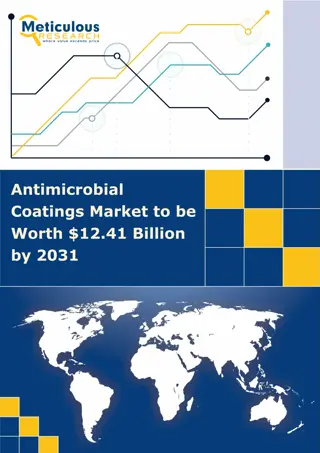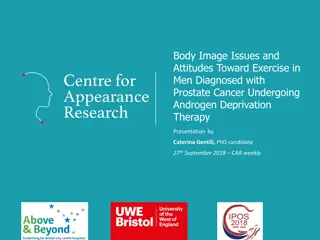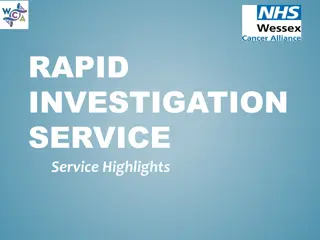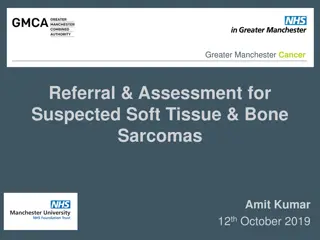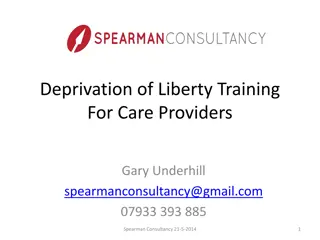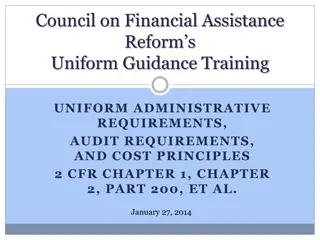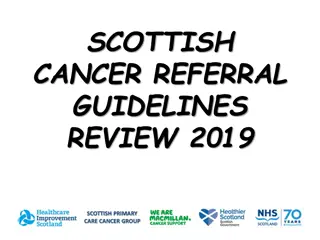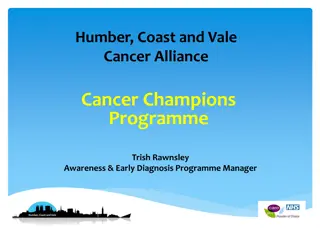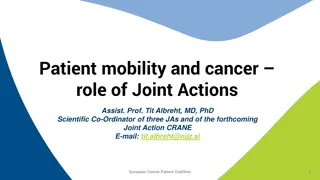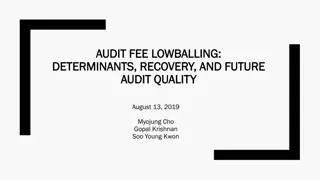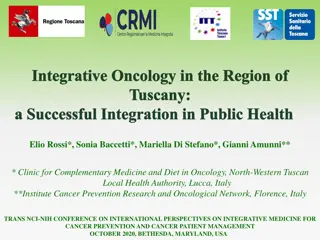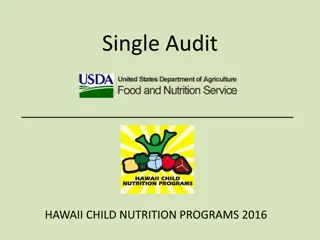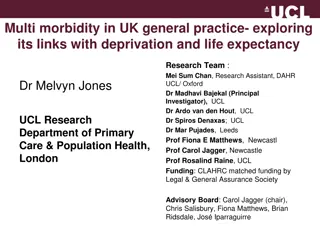Cancer Referral Audit in High-Deprivation Inner City Practice
An audit of 2-week cancer referrals in a practice with high deprivation levels and cancer prevalence among 11,000 patients. The audit shows improvements in referrals, use of regional forms, and patient information on reasons for referral. It highlights the importance of accurate referral processes in speeding up the cancer diagnosis pathway for patients.
Download Presentation

Please find below an Image/Link to download the presentation.
The content on the website is provided AS IS for your information and personal use only. It may not be sold, licensed, or shared on other websites without obtaining consent from the author. Download presentation by click this link. If you encounter any issues during the download, it is possible that the publisher has removed the file from their server.
E N D
Presentation Transcript
2-Week referral audit 2018 Inner city practice with high levels of deprivation. High levels of cancer. 11,000 patients. 8 doctors, 2 registrars (teaching practice) 2 nurse practitioners. Repeat audit of cancer referrals. April 2108
121; 2-week referrals between 1stJan 2018- 20thApril 2018 Improved search for referrals 101; 2-week referrals between 1stJan 2017- 23rdApril 2018 (using old search criteria for 2018 would have resulted in 98 referrals in this time period) Number of 2-week referrals
Number of 2-week referrals Patients referred using regional 2-week referral forms Number of referrals using forms / number of coded cancer referrals 97/101; 2017 119/121; 2018 2 patients referred without forms, both had suspected lung cancer
The 3 parts of the form are audited First the reason for referral. (To have a cancer diagnosis proved or excluded) If a patient knows why they are referred, they are less likely to miss the appointment Second the clinical concern When secondary care receives a good referral they can organise appropriate investigations, ie straight to test, before the patient is seen at hospital. This speeds the process. Patients often complain that the waiting to find out if they have cancer is the hardest part of this process. Third past medical history medication allergies and supporting investigations Having a full history and medication list etc, speeds the process. If a patients is a diabetic, care has to be taken when the patient is asked to fast. Or they may need to stop Warfarin if they will need a biopsy. Or the patient may not be able to have a CT with contrast if renal function is unknown. Again all this speeds the cancer pathway process A completed referral form helps secondary care and ensures that patients have a quicker and smoother journey to prove or exclude a cancer diagnosis.
Patient informed of reason for referral 2018 2017 All 3 actions recorded 53 0 No cancer leaflet (2/3) 49 93 Only one action recorded (1/3) 3 0 No action recorded (0/3) 14 4 Total 119 97
118/119, indicate reason for referral 2018 96/97, indicate reason for referral 2017 Information regarding referral 2018 data/ 2017 data in italics Short summary of reason for referral 106/119 have a helpful summary (29/97, 2017) 3/119 have a partial summary (38/97, 2017) 10/119 have no summary (30/97, 2017)
Past medical history 2018 data / 2017 data in italics 56/119 patients had their PMH tidied up (15/97) 63/119 patients had untidy and unhelpful PMH (82/97) An untidy PMH can make it difficult for secondary care to plan a patient s investigation. One practice sent a 2-week referral form with over 20 pages of past medical history including every consultation the patient had had with the surgery
Dermatology site, this was recorded in 9/15 patients, in the free text 3/15, not recorded at all in 3/15. In 2017 no patient had the site recorded. One breast referral did not have the site. One referral had no refers name One referral had no Past Medical History One referral did not have bloods arranged as the form requested Other learning points
Refers All clinicians completed at least one referral This included nurse practitioners, registrars and locums The number per clinician was from 1 to 29.
Cancer referral types 2018 22 22 15 14 7 1 14 2017 11 12 19 10 14 2 5 1 13 10 97 Breast Colorectal Dermatology Gynaecology Head and Neck Heamatology Lung Sarcoma Upper GI (Including hepatobiliary) Urology Total 16 10 121
1. To inform patient that the referral is to have a cancer excluded. (It is not part of this audit, but patients given an appointment before they leave the surgery are less likely to miss or DNA the appointment at hospital). 2. To give the patient the 2-week referral form leaflet. 3. Someone needs to review the completed form. This could be the GP or the secretary if they are trained to do this. But remember the secretary may not be able to complete the performance status of the patient (or worse may complete this incorrectly). I asked the question would we be happy to receive a letter from secondary care which was poorly completed, we agreed that we would not. Actions 4. Secretaries to check form is completed appropriately and if not ask GP to review (remember that form should be uploaded to ERS within 24 hours)



